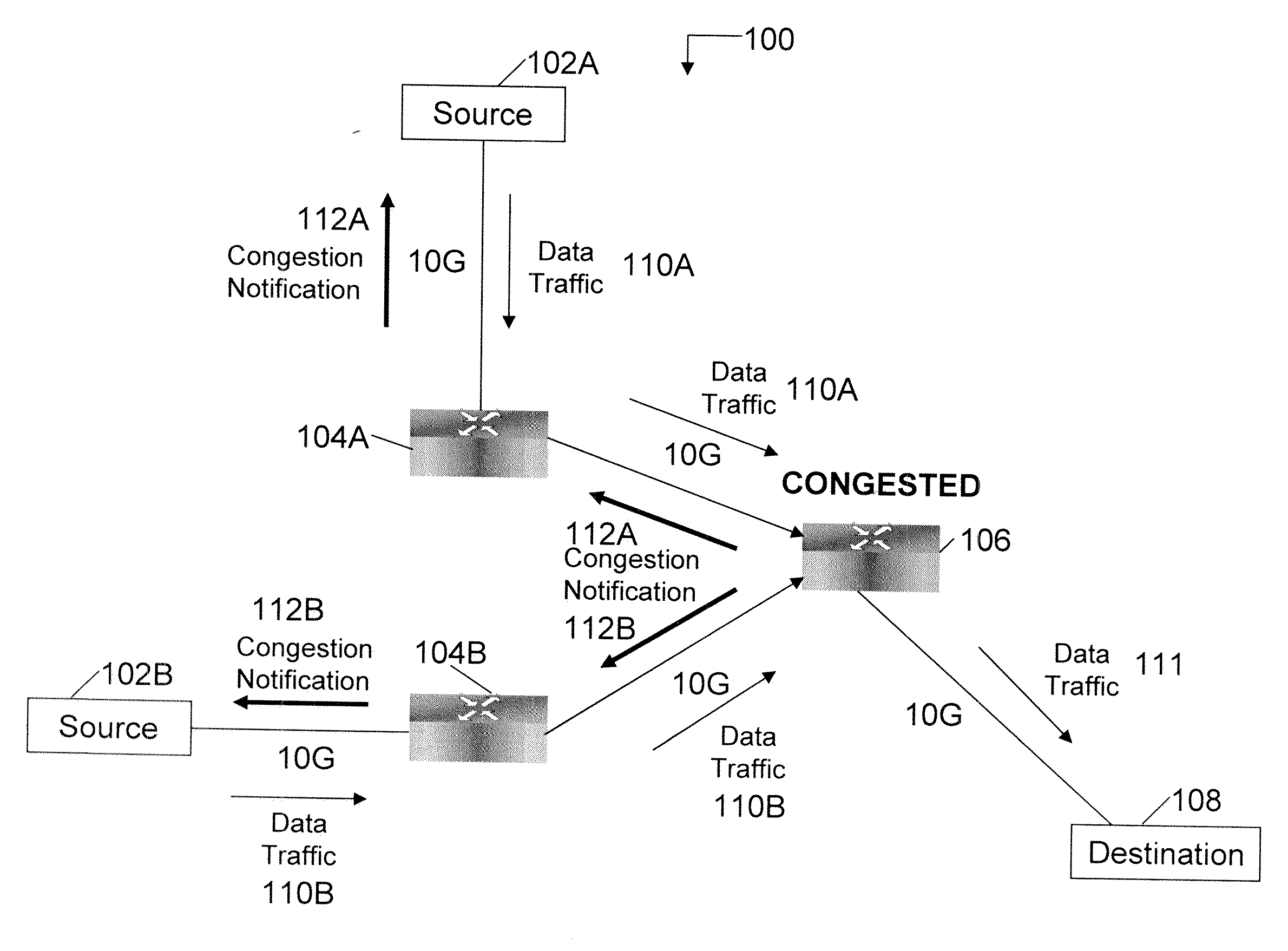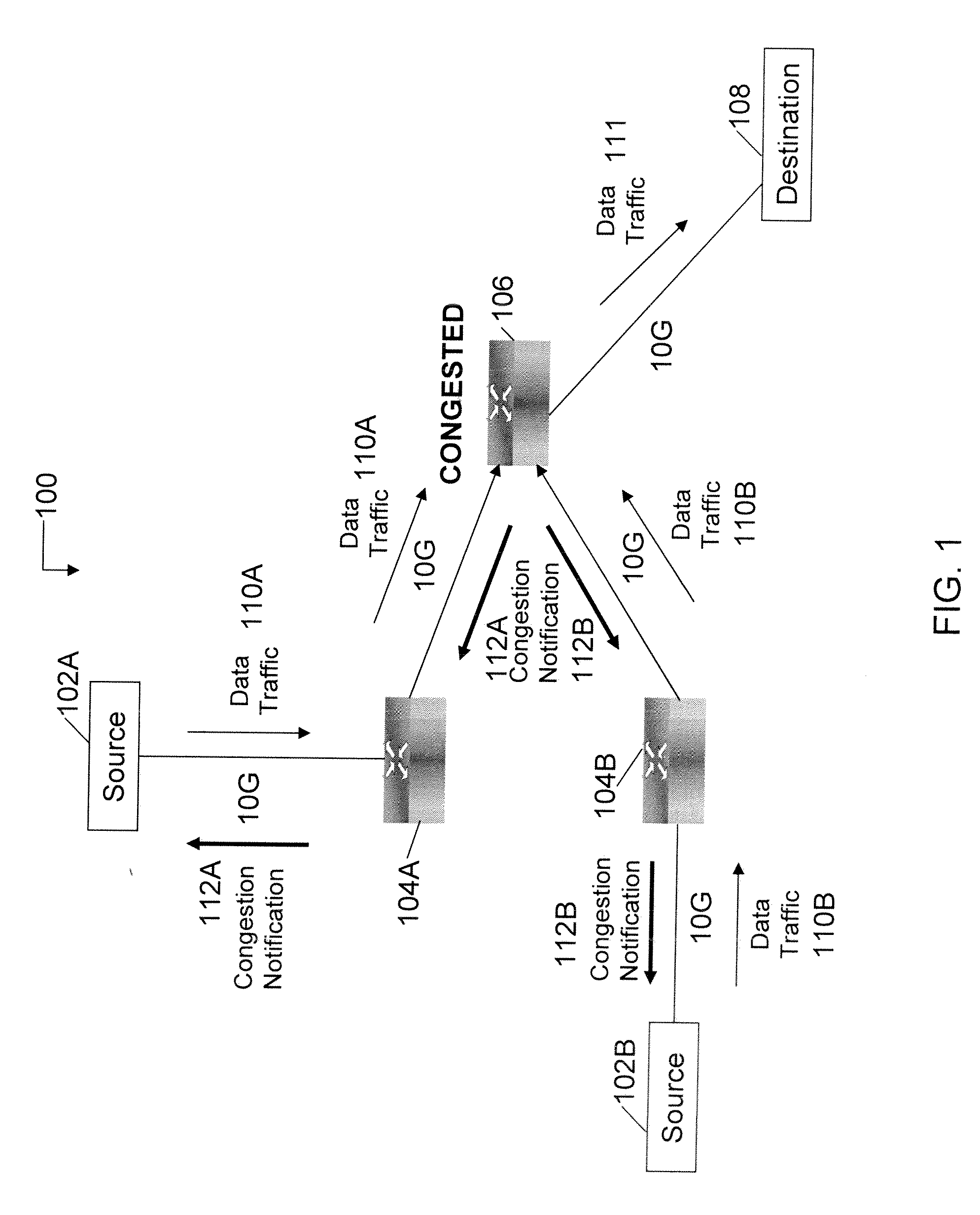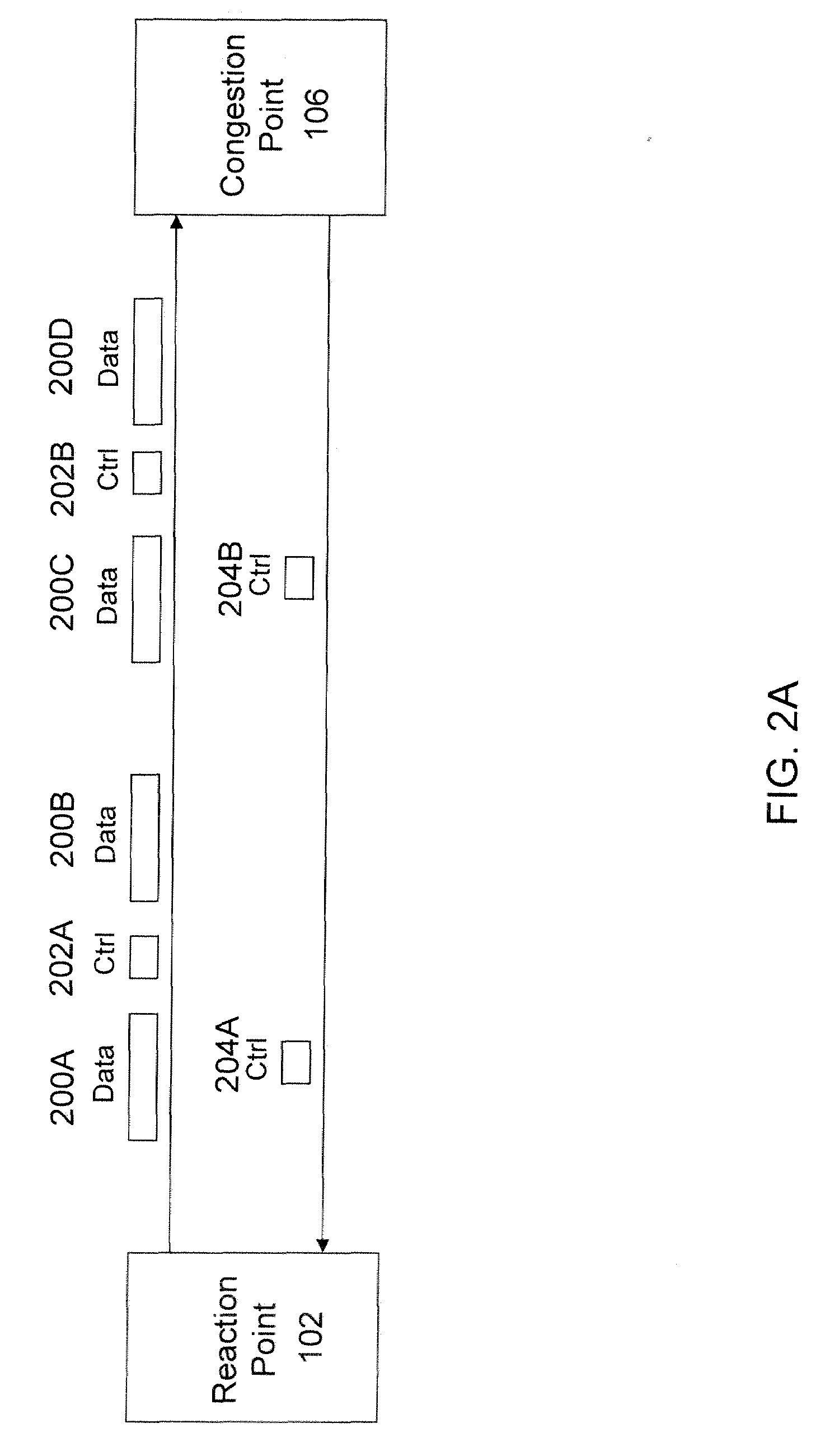Method and Apparatus For Computer Network Bandwidth Control and Congestion Management
a computer network and bandwidth control technology, applied in the field of protocols and mechanisms for congestion management in the layer 2 computer network, can solve the problems of re-calculation of packet checksums, computer network congestion, and slower reaction tim
- Summary
- Abstract
- Description
- Claims
- Application Information
AI Technical Summary
Benefits of technology
Problems solved by technology
Method used
Image
Examples
Embodiment Construction
[0026]One embodiment of the invention provides a protocol to implement congestion management in a Layer 2 computer network, such as Ethernet. Described herein are a congestion management protocol and a congestion management module.
[0027]Embodiments of the protocol to implement congestion management may support both tagging and non-tagging operation, backward notification for signaling, adjustment of data rates of flows that is responsive to RTT between a reaction point and a congestion point, positive feedback to increase the data rate as well as negative feedback to reduce the data rate, congestion point based data rate calculations and adjustments, and variable sampling rates when monitoring for congestion at a congestion point.
[0028]Another embodiment of the invention provides an apparatus and method to implement congestion management in a Layer 2 switch, such as using a coprocessor device that operates in conjunction with a switch core chip. Described herein are switch chip spec...
PUM
 Login to View More
Login to View More Abstract
Description
Claims
Application Information
 Login to View More
Login to View More - R&D
- Intellectual Property
- Life Sciences
- Materials
- Tech Scout
- Unparalleled Data Quality
- Higher Quality Content
- 60% Fewer Hallucinations
Browse by: Latest US Patents, China's latest patents, Technical Efficacy Thesaurus, Application Domain, Technology Topic, Popular Technical Reports.
© 2025 PatSnap. All rights reserved.Legal|Privacy policy|Modern Slavery Act Transparency Statement|Sitemap|About US| Contact US: help@patsnap.com



